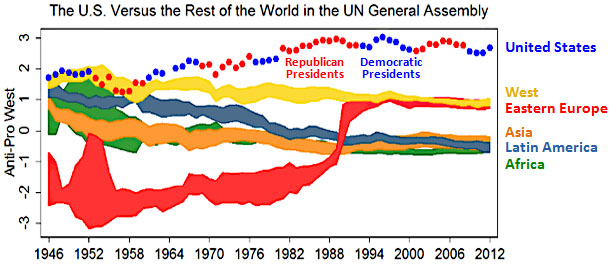Here’s a fascinating chart from Erik Voeten. It’s sort of the international equivalent of those charts that track congressional votes to show how Democrats and Republicans have become more polarized over the years. In this case, Voeten is looking at votes in the UN, and tracking how far apart the U.S. is from everyone else.
When the Iron Curtain fell, Eastern Europe almost immediately adopted the views of the West. Aside from that, however, the lines show that the U.S. has been steadily moving in one direction while every other region has been moving in the opposite direction. In the 1950s, the US, Africa, Latin America, and Western Europe were all quite close. Today, Western Europe has drifted away, and Africa and Latin America are actively opposed to US positions.
You can’t really blame this on the end of the Cold War, either. All of these trends have been steadily visible for over half a century. Voeten surveys a few possible explanations for this, but none of them are entirely persuasive. In the end, it’s a little bit of a mystery why this has happened.


















